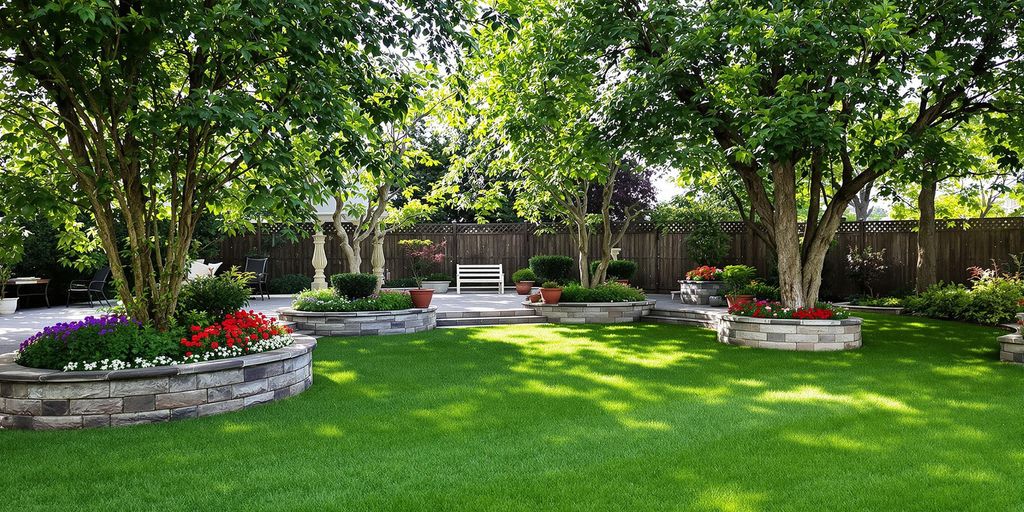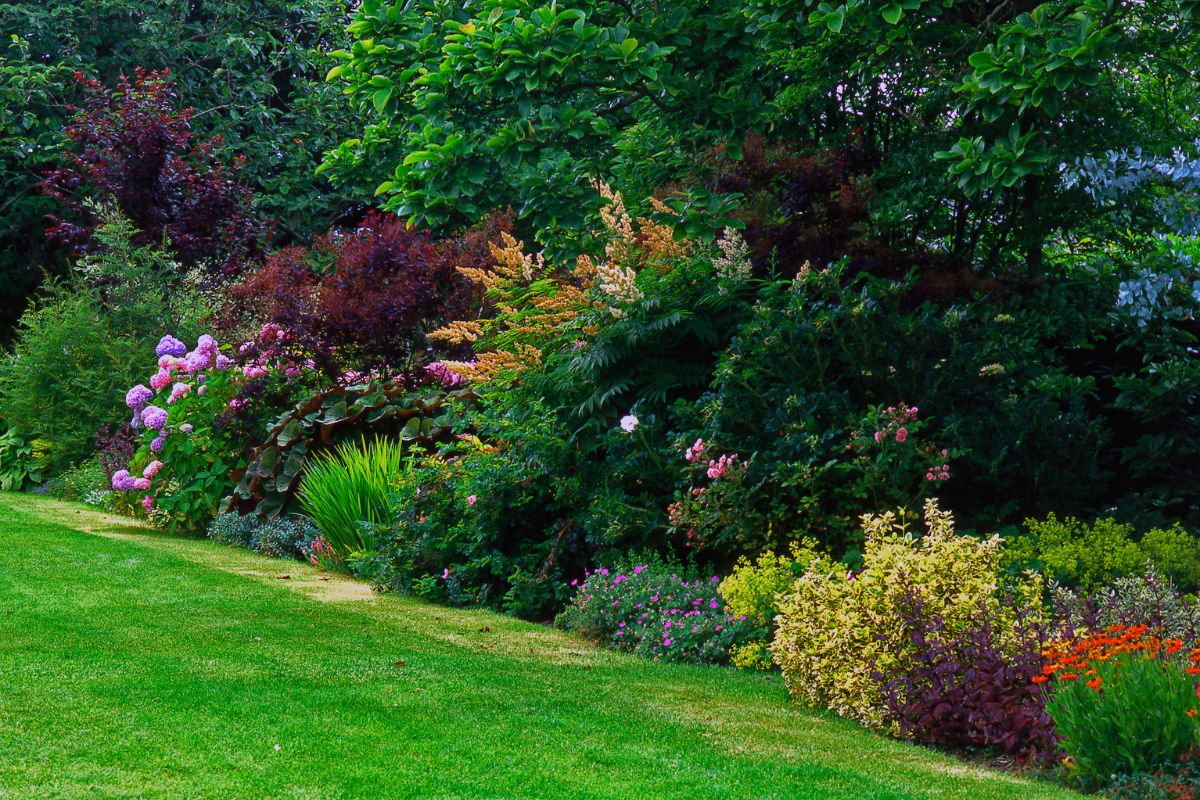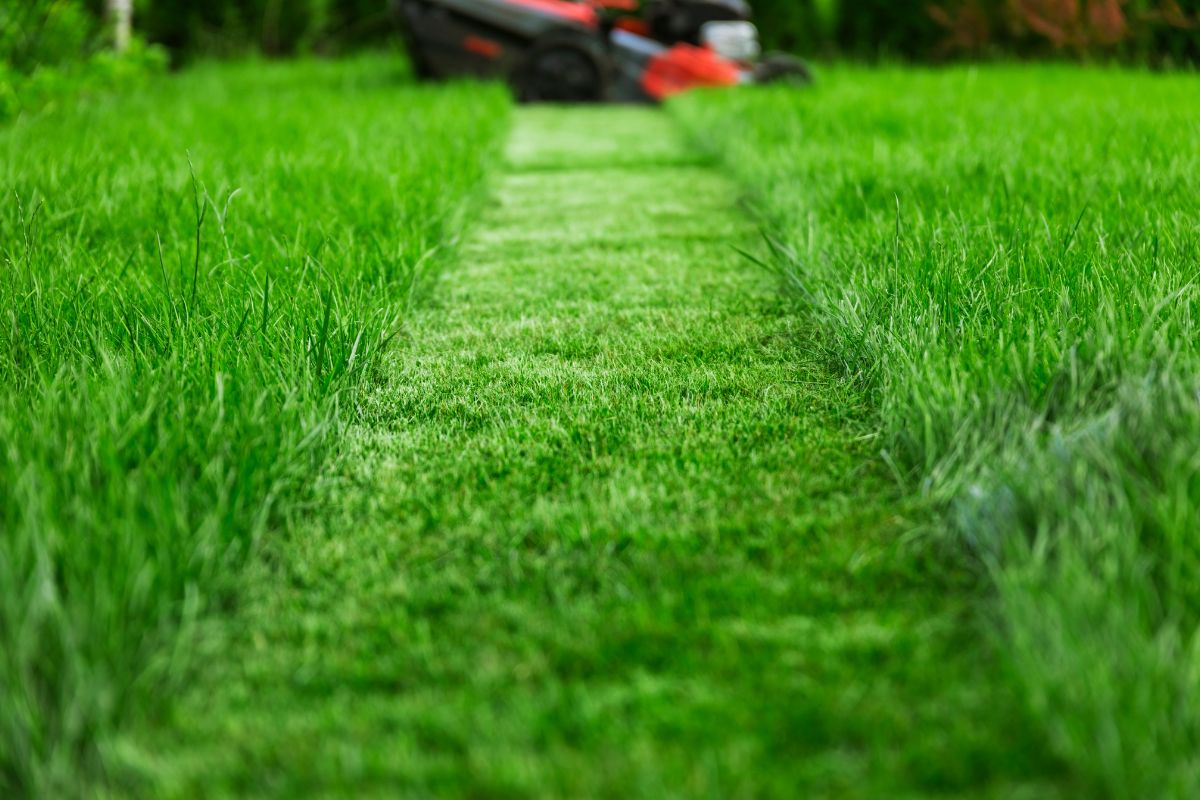
Ever look at your lawn and think it could use a little love? Whether it’s patchy spots, weeds taking over, or just looking tired, a lawn renovation might be just what you need. This guide will walk you through everything step-by-step, so you can bring your outdoor space back to life. Ready to get started? Let’s dig in!
Key Takeaways
- Lawn renovation can fix common issues like bare patches and thinning grass.
- Prepping the soil is just as important as planting new grass.
- Choosing the right grass type depends on your climate and yard conditions.
- Watering and fertilizing correctly can make or break your lawn’s growth.
- Regular upkeep keeps your renovated lawn looking its best.
Understanding the Basics of Lawn Renovation
What Is Lawn Renovation and Why It Matters
Lawn renovation is a process that breathes new life into an old or struggling lawn. It involves steps like improving soil health, overseeding, and addressing underlying issues such as compaction or poor drainage. A well-renovated lawn not only boosts curb appeal but also creates a healthier environment for plants and people alike. Think of it as giving your outdoor space a fresh start without tearing everything out.
Key Benefits of Renovating Your Lawn
Renovating your lawn comes with plenty of perks, including:
- Improved grass density, resulting in a lush, green appearance.
- Better resistance to pests, weeds, and diseases.
- Enhanced soil quality, which supports long-term growth.
Additionally, a renovated lawn can reduce water runoff and improve air quality, making it an eco-friendly choice for your home.
Common Signs Your Lawn Needs Renovation
Not sure if your lawn needs a makeover? Here are a few telltale signs:
- Patchy or thinning grass that struggles to grow.
- The presence of weeds taking over large areas.
- Compacted soil, which makes it hard for roots to spread.
If your lawn looks tired or feels spongy underfoot, it might be time to consider a renovation project.
Preparing Your Lawn for Renovation
Essential Tools and Materials for Lawn Renovation
Before you dive into renovating your lawn, make sure you’ve got the right tools and materials. Having the proper equipment can save you time and effort. Here’s a quick list of what you’ll need:
- A sturdy rake for clearing debris.
- A lawn aerator to loosen compacted soil.
- Grass seeds suited to your climate.
- Fertilizer (organic options are ideal).
- A garden hose or sprinkler for watering.
If you’re missing anything, consider borrowing or renting tools to avoid unnecessary expenses. It’s amazing how much smoother things go when you’re prepared.
Revive your lawn with expert care! Whether you need overseeding, aeration, or a complete lawn makeover, we’ve got you covered. Call us today and take the first step toward a healthier, greener yard!
How to Assess Soil Health Before Starting
Healthy soil is the foundation of a thriving lawn. Start by checking the soil’s pH level; most grasses prefer a slightly acidic range of 6.0 to 7.0. You can use a simple pH testing kit for this. Also, look for signs of poor drainage, like puddles after rain, or compacted soil, which can make it hard for roots to grow.
If your soil needs improvement, consider adding organic matter like compost. This can boost nutrients and improve texture. A little prep work here goes a long way.
Steps to Clear Debris and Weeds Effectively
Clearing your lawn sets the stage for a fresh start. Here’s how to do it effectively:
- Use a rake to remove leaves, sticks, and other debris.
- Pull out weeds by hand or with a weeding tool. Be thorough to get the roots.
- Mow your lawn short, but don’t scalp it—this makes it easier to see problem areas.
Taking the time to clear your lawn properly ensures that your renovation efforts won’t be wasted on hidden issues like persistent weeds or leftover debris.
Once your lawn is clean and ready, you’ll be set up for success when it’s time to move on to the next steps, like aerating and seeding. Renovating up to 25% of fields annually is a smart way to keep your lawn looking its best while maintaining usability.
Choosing the Right Grass for Your Lawn
Factors to Consider When Selecting Grass Types
Picking the perfect grass for your lawn isn’t just about what looks good. It’s about what works for your space. Think about how much time you’re willing to spend on maintenance. Some grasses need constant care, while others are more hands-off. Then, consider your soil. Is it sandy, clay-heavy, or somewhere in between? Grass types thrive differently depending on the soil they’re in. And don’t forget about stress tolerance—how well can the grass handle foot traffic, pets, or even extreme weather? For more tips, see choosing grass for your lawn.
Cool-Season vs Warm-Season Grasses
There are two main categories of grass: cool-season and warm-season. Cool-season grasses, like Kentucky bluegrass or fescue, grow best in cooler climates and are great for areas with harsh winters. Warm-season grasses, such as Bermuda or St. Augustine, love the heat and can handle scorching summers. Here’s a quick comparison:
| Grass Type | Best Climate | Growth Period |
| Cool-Season | Cooler regions | Spring & Fall |
| Warm-Season | Hotter areas | Late Spring-Summer |
How to Source High-Quality Grass Seeds
When it’s time to buy grass seeds, quality matters. Look for certified seeds that meet industry standards—they’re less likely to have weeds or unwanted plants mixed in. Check the label for germination rates; the higher, the better. And don’t overlook the packaging date. Seeds that are too old might not sprout as well. You can also ask around at local garden centers—they often know what works best in your area. If you’re unsure, start small and test a patch before committing to a large area.
Mastering the Lawn Renovation Process

How to Aerate Your Lawn for Better Growth
Aerating your lawn is like giving it a breath of fresh air. It involves creating small holes in the soil to help water, nutrients, and air reach the roots. This simple step can make a world of difference for your grass. You can use a manual aerator, a spike aerator, or even rent a machine for larger yards. Here’s how to do it:
- Mow your lawn short before starting.
- Water the soil lightly to soften it.
- Use the aerator to punch holes evenly across the lawn.
- Follow up with overseeding or fertilizing for the best results.
A pro tip: focus on compacted areas like pathways or spots where kids and pets play a lot.
The Importance of Overseeding in Lawn Renovation
Overseeding is all about filling in those bare or thin patches with fresh grass seed. It helps your lawn look fuller and can even crowd out weeds. Cool-season grasses like fescue or ryegrass often benefit the most from this process. Here’s a quick guide:
- Choose the right seed for your climate.
- Spread the seed evenly using a spreader.
- Lightly rake the area to ensure good seed-to-soil contact.
- Water consistently but avoid puddles.
Overseeding works best right after aerating, as the holes give the seeds a better chance to sprout.
Watering and Fertilizing Tips for a Healthy Lawn
Watering and fertilizing are the bread and butter of lawn care. For watering, aim for about 1 inch per week, delivered in deep, infrequent sessions rather than daily sprinkles. This encourages deep root growth. Fertilizing? That’s where you really boost the health of your grass. Use a balanced fertilizer, or better yet, consider topdressing your lawn with compost to improve soil quality naturally.
Here’s a simple schedule to follow:
| Season | Watering Frequency | Fertilizer Type |
| Spring | Moderate | High-nitrogen |
| Summer | Deep but infrequent | Slow-release |
| Fall | Regular | High-phosphorus |
Remember, a little care goes a long way. Stick to these basics, and your lawn will reward you with lush, green growth.
Maintaining Your Renovated Lawn
Best Practices for Mowing a Newly Renovated Lawn
When it comes to mowing your freshly renovated lawn, timing is everything. Wait until the grass reaches about 3-4 inches tall before giving it the first cut. Using a sharp mower blade is key to avoid tearing the tender new grass. Set your mower to a higher setting to keep the grass slightly longer, which helps it establish deeper roots. Avoid cutting more than one-third of the grass height in a single mow to prevent stress on the lawn.
Seasonal Care Tips to Keep Your Lawn Thriving
Every season brings its own challenges for lawn care. In spring, focus on aeration and fertilizing to kickstart growth. Summer calls for consistent watering—around 1 inch per week, preferably in the early morning to reduce evaporation. Fall is the time to overseed and apply a slow-release fertilizer to prepare the lawn for winter dormancy. By adapting your care routine to the seasons, you’ll keep your lawn looking lush year-round.
How to Address Common Post-Renovation Issues
Even with the best planning, issues can pop up after renovation. Patchy growth is a common problem—simply overseed the bare spots and keep them moist until the grass fills in. If weeds start to take over, consider spot-treating with an organic herbicide to protect your new grass. For drainage problems, aeration and adding a layer of topsoil can help redirect water flow.
A little patience and consistent care go a long way in ensuring your lawn stays healthy and vibrant after renovation.
Eco-Friendly Lawn Renovation Practices
Using Organic Fertilizers and Pesticides
When it comes to lawn renovation, switching to organic fertilizers and pesticides is a no-brainer. These products are free from harsh chemicals, making them safer for kids, pets, and the environment. Look for fertilizers that are rich in natural ingredients like compost or bone meal. For pest control, consider neem oil or insecticidal soaps. By avoiding synthetic chemicals, you’ll not only protect the soil but also encourage beneficial insects to thrive.
How to Conserve Water During Lawn Renovation
Water conservation doesn’t have to be complicated. Start by watering early in the morning or late in the evening to reduce evaporation. Install a rain barrel to collect runoff for watering your lawn. Drip irrigation systems are another option—they deliver water directly to the roots, minimizing waste. Smart watering is key to keeping your lawn lush while saving resources.
The Benefits of Native Grass Species
Native grasses are like the unsung heroes of eco-friendly lawns. They’re adapted to your local climate, requiring less water and fewer nutrients. Plus, they’re naturally resistant to many pests and diseases. Consider varieties like buffalo grass or fescue, depending on your region. Choosing native species means less upkeep and a lawn that’s better for the planet.
A sustainable lawn isn’t just about looking good; it’s about creating a space that works with nature, not against it. Small changes, like using organic products and planting native grasses, can make a big difference in the long run.
Say goodbye to patchy grass and stubborn weeds! Let our lawn renovation experts restore your yard with customized solutions for a lush, green landscape. Call us today to schedule your free consultation!
Enhancing Your Lawn with Landscaping Features
Incorporating Pathways and Edging for a Polished Look
Adding pathways and edging to your lawn can make a world of difference. Not only does it separate spaces, but it also gives your yard a clean, organized appearance. Pathways guide the eye and feet, creating a natural flow through your outdoor space. Popular materials include:
- Gravel: Affordable and easy to install.
- Pavers: Durable and available in various styles.
- Mulch: Great for a softer, natural look.
For edging, brick or metal strips are common choices. They help define flower beds or garden areas while reducing the spread of grass into unwanted zones. The key is to match your materials to the overall theme of your yard for a cohesive look.
Adding Flower Beds and Shrubs to Complement Your Lawn
Flower beds filled with vibrant blooms and shrubs can add depth and color to your lawn. When choosing plants, consider:
- Sunlight availability in different areas of your yard.
- Soil type and drainage conditions.
- Seasonal plants for year-round interest.
Mixing heights and textures creates a dynamic effect. For example, taller shrubs at the back, medium-height flowers in the middle, and ground covers in the front. You can also include native plants to make maintenance easier and support local wildlife.
How to Use Lighting to Highlight Your Lawn’s Features
Outdoor lighting isn’t just for safety—it’s also a great way to showcase your lawn’s best features. Think about:
- Spotlights to emphasize trees or sculptures.
- String lights for a cozy, inviting atmosphere.
- Pathway lights to illuminate walkways.
LED options are energy-efficient and long-lasting, making them a smart choice. Place lights strategically to avoid over-lighting or creating harsh shadows. Done right, lighting can transform your lawn into a magical space after sunset.
A well-designed lawn isn’t just about the grass. It’s about combining elements that create harmony and make your outdoor space truly feel like home. Start small, experiment, and watch your yard come to life.
Wrapping It Up
So, there you have it. Giving your lawn a fresh start doesn’t have to be overwhelming. It’s all about taking it one step at a time—whether that’s fixing up the soil, planting new grass, or just keeping up with regular care. Sure, it might take a bit of effort, but the payoff? Totally worth it. Imagine stepping outside to a yard that feels like your own little retreat. So grab your tools, roll up your sleeves, and get started. Your outdoor space is waiting!
Frequently Asked Questions
What is lawn renovation?
Lawn renovation is the process of improving or fixing your lawn to make it healthier and more attractive. It can include things like reseeding, aerating, or removing weeds.
When should I renovate my lawn?
The best time to renovate depends on the type of grass you have. Generally, spring or early fall works best for most lawns.
Do I need special tools to renovate my lawn?
Yes, some tools like an aerator, rake, and seed spreader can make the job easier. You might also need fertilizers and grass seeds.
How long does it take to see results from lawn renovation?
It usually takes a few weeks to start seeing improvements. Full results may take a couple of months, depending on the steps you take and your lawn’s condition.
Can I renovate my lawn without chemicals?
Yes, you can use organic fertilizers and natural methods to improve your lawn. These options are better for the environment too.
What are the signs that my lawn needs renovation?
If your lawn has bare spots, lots of weeds, or looks unhealthy, it might be time to renovate. Poor drainage and compacted soil are also signs to watch for.
Have questions about lawn renovation? Visit us to inquire, our team is ready to assist you!


